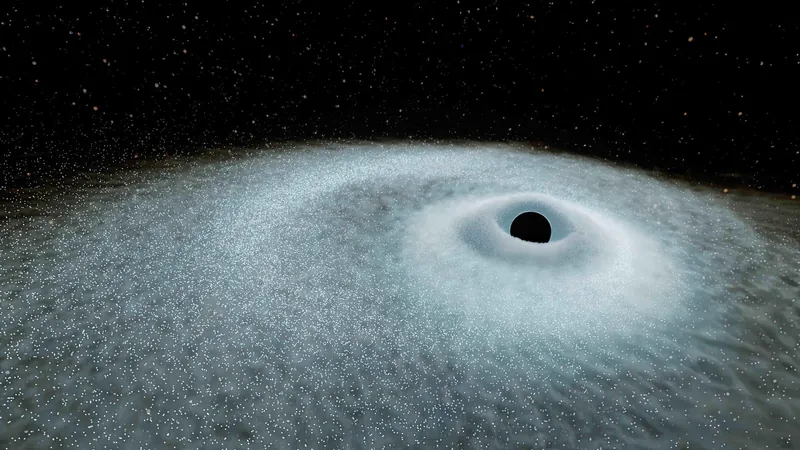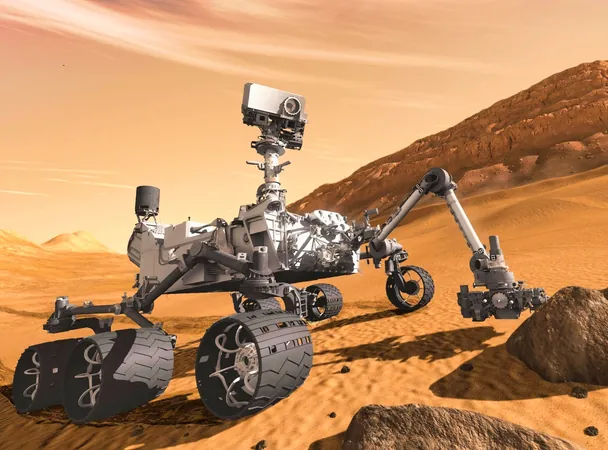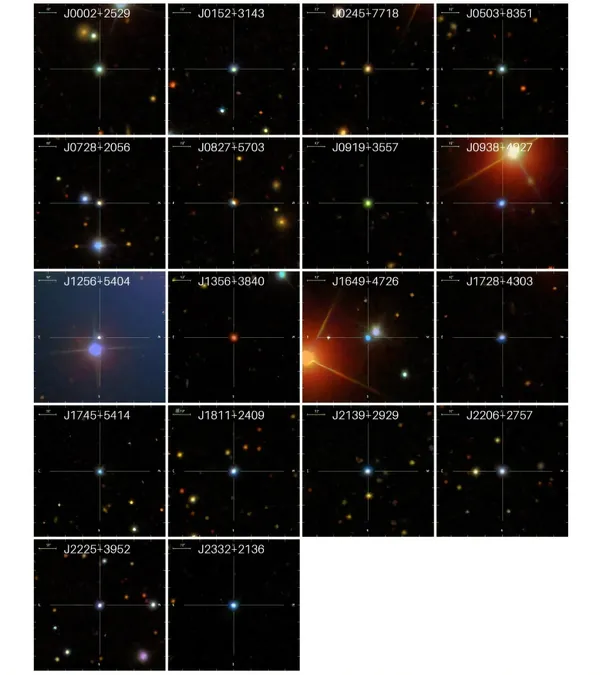
Unveiling the Universe's Most Explosive Events: Black Holes Tear Stars Apart!
2025-06-05
Author: Noah
Astronomical Discoveries: Cataclysmic Cosmic Events Revealed
Get ready to be amazed! Astronomers have recently documented the most powerful explosions ever recorded since the Big Bang. These extraordinary events, dubbed Extreme Nuclear Transients (ENTs), occur when massive stars get devoured by supermassive black holes, releasing energy that surpasses the combined firepower of 100 supernovae!
What Makes ENTs So Fascinating?
Black holes possess such intense gravity that not even light can escape. Supermassive black holes, found at the centers of galaxies, vary in behavior; some constantly consume cosmic matter, while others remain hidden until a hapless star wanders too close. ENTs offer a rare glimpse into these otherwise elusive behemoths.
Ten Times Brighter: A New Category of Cosmic Explosions
Leading the charge in this groundbreaking research, Jason Hinkle from the University of Hawaii’s Institute for Astronomy shared, "We’ve documented tidal disruption events for over ten years, but ENTs are true game changers, shining nearly ten times brighter than typical occurrences." These spectacular flares don’t just flash and fade; they can take over 100 days to reach peak brightness and linger for over 150 days while dimming.
The Science Behind ENTs: A Stellar Feast
So, what exactly is happening during these events? When a massive star—at least three times the mass of our sun—ventures too close to a supermassive black hole, it undergoes a phenomenon known as tidal disruption. This process tears the star apart, emitting an astonishing amount of energy. Unlike traditional tidal disruption events, ENTs remain brilliant for years, far outshining even the most luminous supernovae. Hinkle emphasized, "These ENTs not only mark the end of a massive star’s life; they illuminate the growth processes of huge black holes throughout the universe."
Spotlighting Gaia18cdj: The Most Energetic Event Recorded!
The star of the show? An ENT labeled Gaia18cdj, which released 25 times more energy than the strongest supernova witnessed to date! This extraordinary discovery was made by analyzing data from the European Space Agency’s Gaia mission, capturing trillions of observations of billions of stars.
Peering into the Past: Cosmic Treasure Awaits!
Astronomy offers a unique lens into the past. ENTs shine so brightly that they can be observed from vast distances, opening windows to times when the universe was only half its current age—a period known as the "cosmic noon." Expert Benjamin Shappee noted that this was when galaxies were bustling with activity—formulating stars and aggressively feeding their supermassive black holes.
The Future Looks Bright for Black Hole Research!
Excitingly, NASA's upcoming Nancy Grace Roman Space Telescope, set to launch in 2026, aims to utilize its infrared capabilities to catch glimpses of these rare cosmic explosions from over 12 billion years ago. This will deepen our understanding of how black holes have shaped galaxies across the expansive timeline of the universe.
As we embark on this cosmic adventure, let’s hope for clear skies and wide eyes—there’s so much more to explore!









 Brasil (PT)
Brasil (PT)
 Canada (EN)
Canada (EN)
 Chile (ES)
Chile (ES)
 Česko (CS)
Česko (CS)
 대한민국 (KO)
대한민국 (KO)
 España (ES)
España (ES)
 France (FR)
France (FR)
 Hong Kong (EN)
Hong Kong (EN)
 Italia (IT)
Italia (IT)
 日本 (JA)
日本 (JA)
 Magyarország (HU)
Magyarország (HU)
 Norge (NO)
Norge (NO)
 Polska (PL)
Polska (PL)
 Schweiz (DE)
Schweiz (DE)
 Singapore (EN)
Singapore (EN)
 Sverige (SV)
Sverige (SV)
 Suomi (FI)
Suomi (FI)
 Türkiye (TR)
Türkiye (TR)
 الإمارات العربية المتحدة (AR)
الإمارات العربية المتحدة (AR)